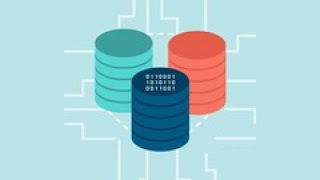Build a Python Application to interact with PostgreSQL Database
Platform: Udemy
Status: Available
Duration: 2 Hours
Price: $64.99 $0.00
Note: Udemy FREE coupon codes are valid for maximum 3 days only. Look for "Get Coupon" orange button at the end of Description.
What you'll learn
- Setup PostgreSQL Database Server
- Create a new database and table
- Create a sequence to provide automatic numbering on a column
- Alter column in a table
- Create database connection configuration file
- Create Graphical User Interface with tkinter
- Create message pop up messages on application
- Create and activate a virtual environment
- Create a class and methods
- Create functions
- Bind button widgets to functions
- Connect to PostgreSQL Database Server from Python Application
- Basic knowledge of SQL will help
- Basic knowledge of Python will help
- Basic knowledge of PostgreSQL
In this course you learn how to interface a Python application program with a PostgreSQL database. Python has various modules that you can use to interact with databases. We will install psycopg2 connector module to enable us interact with PostgreSQL database from our Python application.
We will be installing PostgreSQL Database Server and also create a new database and table that our Python application will interact with.
We will create the Python application frontend using Tkinter which is a built in Python module used to create graphical user interfaces . From tkinter module we will import ttk module which is a themed widget library that contains various types of widgets like buttons,labels etc that we can use to build the graphical user interface for our Python application. We will also import other bits and pieces from the tkinter module that our Python application will use.
Also we will create a database configuration file that twill be used to interact with the PostgreSQL database from our Python application.
We will be installing PostgreSQL Database Server and also create a new database and table that our Python application will interact with.
We will create the Python application frontend using Tkinter which is a built in Python module used to create graphical user interfaces . From tkinter module we will import ttk module which is a themed widget library that contains various types of widgets like buttons,labels etc that we can use to build the graphical user interface for our Python application. We will also import other bits and pieces from the tkinter module that our Python application will use.
Also we will create a database configuration file that twill be used to interact with the PostgreSQL database from our Python application.
Who this course is for:
- Beginners to Python
- Beginners to Programming
- Beginners to SQL

